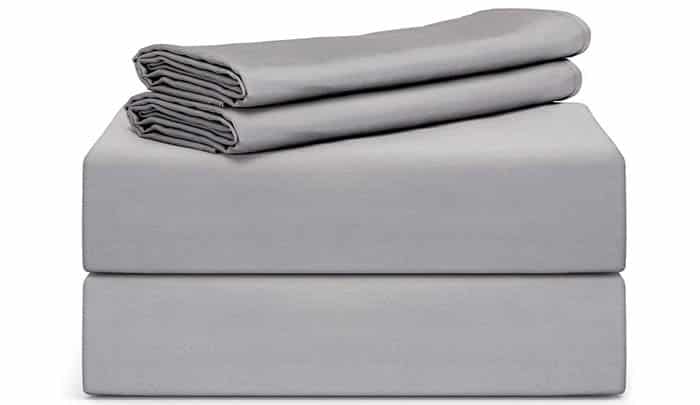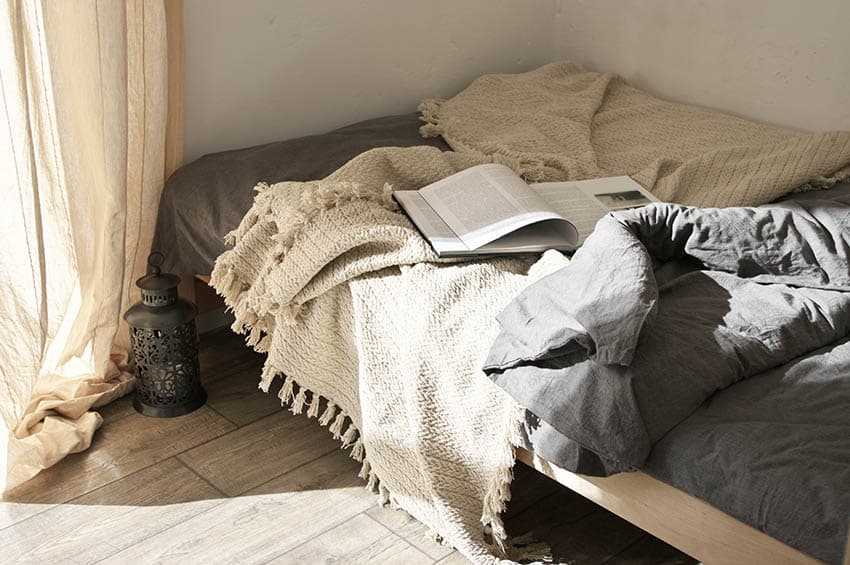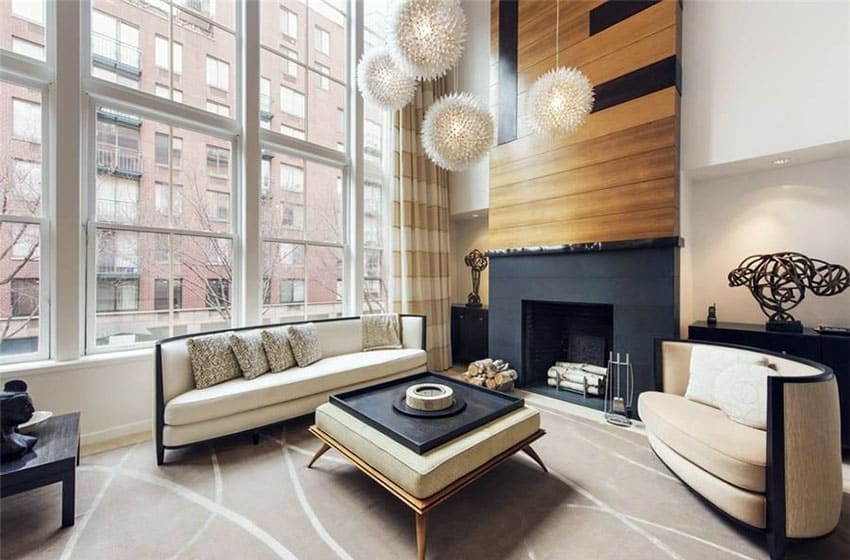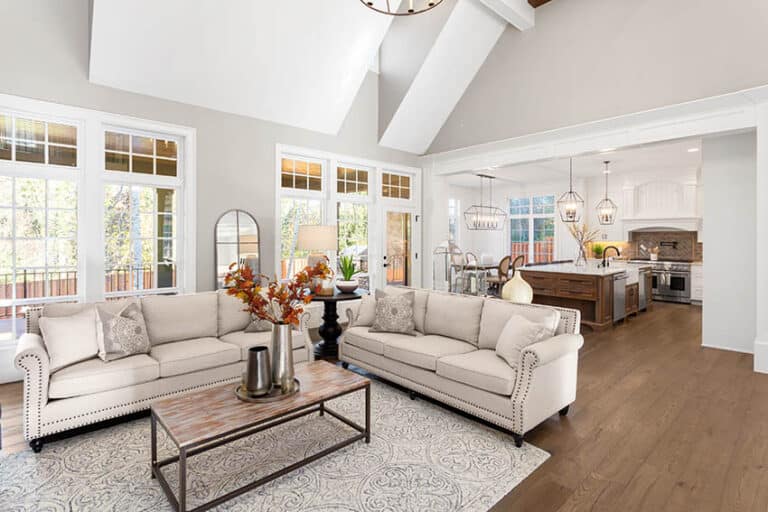Pros and Cons of Bamboo Sheets
When I first heard about bamboo sheets, I’ll admit, I was one of the skeptics. It’s not every day you hear of bed sheets made from bamboo, right? But as I dove deeper, I discovered a passionate community of fans who couldn’t stop raving about their unparalleled comfort, incredible softness, and how these sheets transformed their sleep experience. So, I decided to explore both the pros and cons of bamboo sheets, to uncover the whole truth.
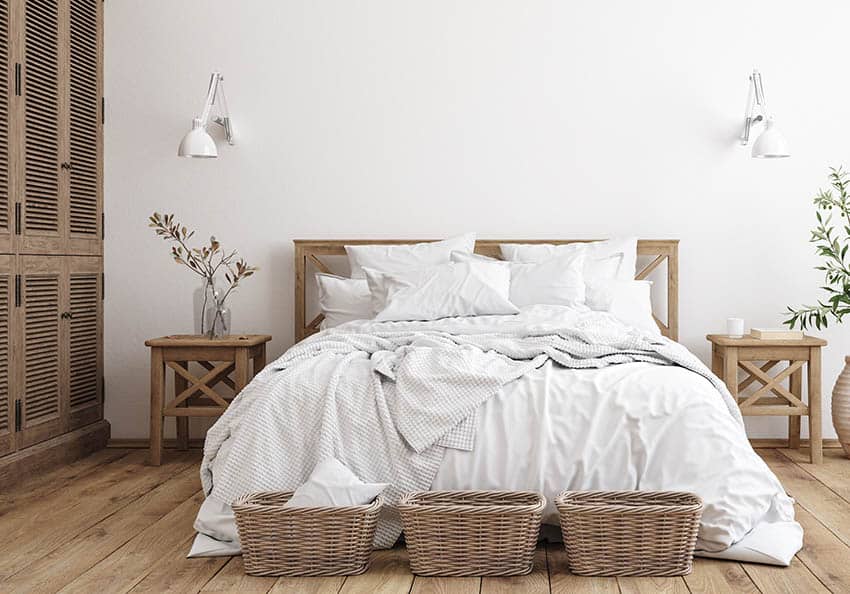
If you’re curious about the hype, you’re in the right place. Lets take a look at the benefits and drawbacks. [toc]
Pros
Bamboo sheets are extremely durable and long-lasting. They hold up well to washing and drying as long as care instructions are followed and are unlikely to shrink.
Bamboo absorbs and holds dyes better than materials like cotton, so sheets with colors and patterns will stay vibrant for longer.
Sleepers who tend to sweat during the night may notice that they stay cooler with bamboo sheets on the bed. This is due to the exceptional moisture-wicking properties of bamboo fibers.
Up to 40% more effective at absorbing moisture than cotton, bamboo sheets help your skin stay dry and keep the air moving around you, leading to better thermal regulation.
These sheets are also naturally antimicrobial. Because fewer chemicals are used during the production of a bamboo bedding, there is a lowered risk of an allergic reaction to these materials.
See these 100% bamboo sheets on Amazon. (aff link)
Cons
Most of the cons of bamboo sheets come down to personal preference. And one of them is they do not soften up. For example, cotton sheets get softer with every wash, while bamboo sheets hold their structure and maintain the same softness and integrity throughout their lifetime.
Bamboo sheets are slightly more expensive than other kinds of sheets, but the difference is minimal, especially when you consider their long lifespan.
Folding these sheets will result in creases when they are unfolded and laid on the bed. For most consumers, this isn’t an issue, as the sheets will be covered by a quilt, bedspread, or duvet.
They wrinkle a lot. If wrinkle-free sheets are a priority for you, stick to sateen weave sheets, hang your sheets flat for a few hours before making the bed, or iron them using the lowest heat setting.
See these hypoallergenic 100% bamboo sheets on Amazon. (aff link)
What Are Bamboo Sheets
Bamboo is an invasive plant species that can live underground for up to five years before breaking the surface. Once it’s burst through the soil, however, it grows rapidly.
The fastest-growing varieties can add up to three feet to their height in a single day. Bamboo is technically a grass, not a tree, despite its rigid structure and durability.
Bamboo can be used to create two types of material used for bedding. The first and most common is created via the viscose process, where harsh chemicals are used to dissolve the rigid structure into a pulp.
The pulp is then fed through a special machine that allows the manufacturer to extract a substance called cellulose. In a living plant, cellulose forms a rigid barrier between cells.
These deconstructed barriers are spun into fibers, which are then woven together to create the product you see on store shelves labeled bamboo sheets.
The other type of material is called bamboo linen. Rather than dissolving the entire plant into pulp, this process requires separating the stalk into three parts.
The exterior and interior of the stalk are stripped away and discarded, leaving behind the long fibrous strands that live between the outer bark and the inner core. These are called bast bamboo fibers. The process is similar to the process used to create linen from flax.
Since bamboo regenerates so quickly, it is prized as a renewable resource and, therefore, carries the connotation of eco-friendliness.
However, the viscose process uses harsh chemicals that are not environmentally friendly, so eco-conscious consumers may prefer to purchase bamboo linen.
Like linen derived from flax, this fabric tends to be a little rougher to the touch and is fairly wrinkle-prone. Fabric made from the viscose process is much softer and resists wrinkling and creasing.
Types of Bamboo Style Sheet Weave Patterns
The texture of bamboo sheets is dependent not only on the manufacturing process used to create the fibers but also on the way those fibers are woven together. The three most common weaves for bamboo sheets are percale, twill, and sateen.
Percale
Percale sheets are lightweight and are prized for their breathability. They tend to feel crisp and cool, making them popular in tropical environments. This crispness can translate into creases and wrinkles.
Twill
The ribbed structure of this weave makes these twill sheets incredibly durable and long-lasting. It feels a bit rougher than percale or sateen weave sheets.
Sateen
Soft and silky, sateen woven bamboo sheets are a pleasure to touch. They drape beautifully and resist wrinkles. On the flip side, they also retain more heat than twill or percale weaves.
Bamboo Bedding Cost
A set of bamboo sheets is likely to cost at least $35 to $50, with higher-quality products, such as linen sheets, priced up to $200.
They are usually slightly more expensive than cotton products of a similar quality. Cotton sheets also start at about $40 to $50 per set, but the price range extends all the way up to $500 for premium Egyptian cotton.
While these products tend to cost more upfront, this difference in price is mitigated somewhat by their durability.
A bamboo bedding set, properly cared for, can be expected to withstand five to six years of daily use. Cotton sheets, on the other hand, will usually need to be replaced after two or three years of daily use.
Is Bamboo Healthier Than Cotton Sheets?
Yes. Although bamboo is technically a grass, it is similar to wood in many ways. One of the most important similarities is its natural antibacterial and antifungal properties.
The structure of the fiber actually repels bacteria and fungus. This means that pesticides and anti-fungal treatments are usually not necessary during production, and so fewer chemicals end up in bed with you.
The protection doesn’t fade when this plant is harvested, so this material retains their creepy-crawly repellent properties.
Cotton, on the other hand, does not come with this natural protection. Cotton plants often require the help of antibiotics and pesticides to grow.
The resulting fabric can be treated with chemical sprays or washes during the manufacturing process to increase its resistance to microbes, but these chemicals also increase the likelihood of an allergic reaction or skin sensitivity.
Have we left out any pros and cons of bamboo sheets? Let us know what you think of these types of sheets in the comments. For more information, please visit our gallery on the types of beds.


